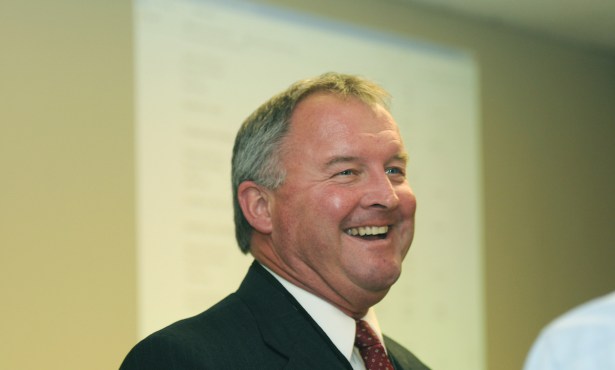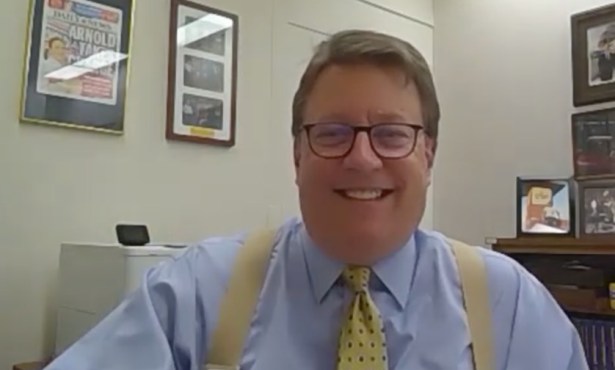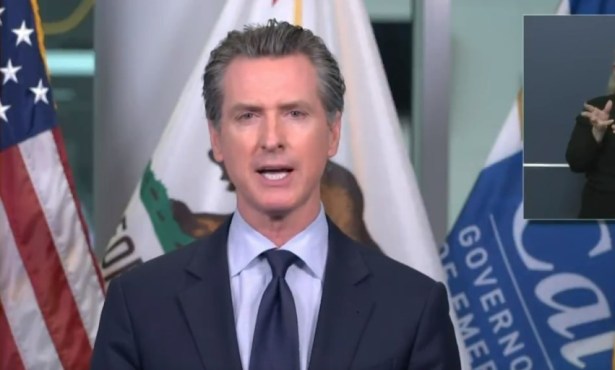
A foe of capital punishment, Gavin Newsom said while running for governor that, if elected, he would not substitute his personal views for the will of California voters, who have repeatedly supported the death penalty.
Not three months into his term, Newsom did just that.
On March 13, the new governor declared an “executive moratorium” on executions in California, granting reprieves to all 737 inmates on Death Row, most of them murderers. He also canceled the state’s existing lethal injection protocol for carrying out the death penalty and, in a characteristic grandstanding move, had his press office tweet out a photo of San Quentin’s death chamber being dismantled.
Never lacking in self-regard, Newsom in explaining his action went well beyond long-familiar, anti-death-penalty policy arguments — it’s too expensive, is not a deterrent, is biased against minorities — casting the matter in extremely personal terms:
“I’ve had to process this in a way I didn’t frankly anticipate,” he told reporters. “A few months ago, it was an abstract question. Now it’s a very real question.
“It’s a very emotional place that I stand,” Newsom added. “This is about who I am as a human being; this is about what I can or cannot do. To me, this is the right thing to do.”
L’etat, c’est moi.
THE POLITICS OF DEATH: As a legal matter, Newsom is on firm ground. The governor has the power to grant a stay of execution to any condemned prisoner, so his order would be difficult to challenge in court.
Although a reprieve does not remove the death sentence imposed on the convicted, and would not automatically carry over to his successor, Newsom effectively has imposed a blanket, albeit temporary, moratorium by granting a stay to everyone on Death Row.
Politics is another matter.
Twice in recent high-turnout, presidential election years, majorities of voters rejected efforts to overturn California’s constitutional death penalty provision: 52 percent opposed Proposition 34 in 2012, while 53 percent voted against Prop. 62 in 2016, when they also approved Prop. 66, which called for speeding up lengthy appeals of death sentences.
“He is just flagrantly violating the law,” Kent Scheidegger, lead author of Prop. 66, told the L.A. Times, one of a chorus of victims’ rights advocates who denounced the governor.
Newsom’s action is “wrong, ironic and broken on multiple levels,” Republican National Committee member and ex-state party officer Harmeet Dhillon told political reporter Carla Marinucci, calling it “a very sleazy bait-and-switch after not making it a campaign issue.”
“This is about who I am as a human being; this is about what I can or cannot do.”
In fact, Newsom’s campaign last year was asked to square his personal views with settled law — and offered clear assurances that he would not allow the former to undermine the latter.
Newsom “recognizes that California voters have spoken on the issue and, if elected governor, he’d respect the will of the electorate by following and implementing the law,” a spokesperson told the San Francisco Chronicle.
Oh, never mind.
DÉJÀ VU ALL OVER AGAIN: For longtime Gavin watchers, his MO on the death penalty issue is familiar. In 2004, as mayor of San Francisco, Newsom unilaterally challenged state law when he allowed same-sex marriages to be performed there.
That triggered years of litigation and political turmoil (and contributed to President George W. Bush’s reelection) that ended with Newsom’s political vindication when the U.S. Supreme Court in 2015 upheld the right of gay people to marry.
Now Newsom again has injected a volatile issue into the national debate. As he traveled back east on a high-profile media tour — the women on The View gushed over his move — Trump bashed him for “defying voters” and sparing “737 stone killers,” while Democratic presidential hopefuls suddenly were quizzed about capital punishment.
He’s also set the stage for yet another ballot fight in California. Democratic allies in the Legislature are preparing a measure for 2020. Repeal of the death penalty requires a two-thirds vote in each house and majority approval by voters.
“Ultimately,” Newsom said, “the way to end the death penalty in California is to go to the ballot.”




You must be logged in to post a comment.